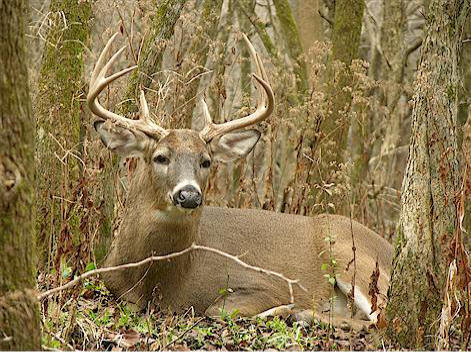
White-tailed deer are very adaptable animals, but good deer habitat usually includes a mixture of trees, shrubs, vines, forbs, grasses. High quality deer habitat will also contain important foods such as fungi and even sedges. Of course, specific plants within each of these categories benefit deer more than others. If you really looked at a deer’s mouth, you will notice that it’s quite small and relatively pointed. This is because deer are highly selective with regards to their diet.
Palatable plants should be well interspersed throughout an area, so that the whole area functions as deer habitat. Over much of the whitetail’s habitat, adequate woody plants should be present to provide food, shelter and concealment. The enroachment of woody plants into areas that were once dominated by grasses is an important reason for the expansion of the whitetail deer. In addition to browse plants, some sort of water source should be available about every mile for deer watering. Put all these habitat requirements together—food, cover, water, and space—and you’ve got whitetail habitat.
When it comes to deer habitat, plant diversity is an important because deer require a variety of plants to provide their various needs. Many plants are utilized during only one season (when they are growing/available) or a portion of a season. Keep in mind that each plant that is eaten provides only a portion of a deer’s nutritional requirements. However, many plant species are not consumed by deer. These plants are also important, serving as cover and concealment for traveling and loafing animals. Continue reading What is Good Deer Habitat?